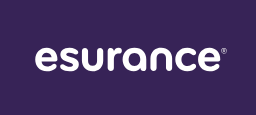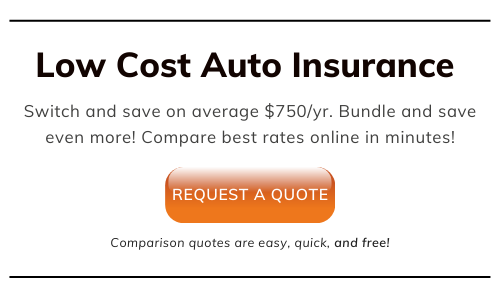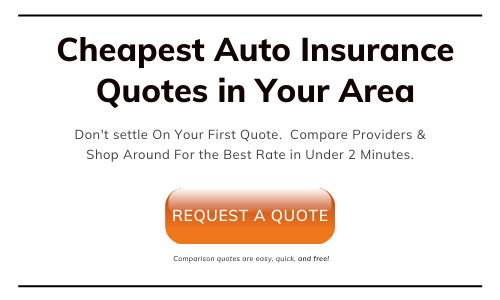Cheapest Auto Insurance In Minnesota
Free Insurance Comparison
Compare Quotes From Top Companies and Save
Secured with SHA-256 Encryption
Kristen Gryglik
Licensed Insurance Agent
Kristen is a licensed insurance agent working in the greater Boston area. She has over 20 years of experience counseling individuals and businesses on which insurance policies best fit their needs and budgets. She knows everyone has their own unique needs and circumstances, and she is passionate about counseling others on which policy is right for them. Licensed in Massachusetts, New Hampshire,...
Licensed Insurance Agent
UPDATED: Dec 4, 2023
It’s all about you. We want to help you make the right coverage choices.
Advertiser Disclosure: We strive to help you make confident insurance decisions. Comparison shopping should be easy. We are not affiliated with any one insurance provider and cannot guarantee quotes from any single provider.
Our insurance industry partnerships don’t influence our content. Our opinions are our own. To compare quotes from many different insurance companies please enter your ZIP code on this page to use the free quote tool. The more quotes you compare, the more chances to save.
Editorial Guidelines: We are a free online resource for anyone interested in learning more about insurance. Our goal is to be an objective, third-party resource for everything insurance related. We update our site regularly, and all content is reviewed by insurance experts.
Finding the cheapest auto insurance in Minnesota involves two critical steps: doing your research and shopping comparatively.
First, gather quotes from several insurance providers to find a price that suits your budget.
Secondly, research the policy offerings, financial strength, and customer ratings of each company so that you can be sure your potential provider can meet your needs and reliably process your claims.
The cost of car insurance depends on several elements, including your age, gender, the make and model of your vehicle, and where you live. Your geographic location can also greatly influence car insurance providers, particularly the theft rates and traffic conditions in your area. If you understand this process, you can more easily ask the right questions and secure the best price.
The information below is designed explain how your region of the country affects your premiums, so you can then find the best insurance rates in Minnesota.
Companies With The Cheapest Auto Insurance In Minnesota
Here are the top 4 providers of cheap car insurance in MN:
Progressive
Progressive has been writing insurance policies throughout America since 1931. It has since grown exponentially and now insures more than 18,000,000 drivers.
Auto insurance from Progressive features plenty of coverage and discount options, as well as Progressive’s Name Your Price Tool, which allows drivers to build a policy that suits both their driving habits and budget.
Compare Rates with Progressive
Esurance
Esurance is a part of the Allstate family. It’s known for simple insurance solutions and easy policy management tools including Esurance mobile.
This company makes several discounts available to its policyholders, including homeowner, student, and bundled policy discounts.
Liberty Mutual
Liberty Mutual offers competitive rates and boasts that drivers who switch from another insurance provider save an average of $509.
It also gives its policyholders a 12-month rate guaranteed rate and makes plenty of discount options available to all drivers.
American Family
American Family is another insurance provider with extremely competitive rates.
Customers of American Family can expect a simplified and fast claims process, as well as auto insurance policies that include 24/7 claims processing and roadside assistance.
Enter your ZIP code below to view companies that have cheap insurance rates.
Secured with SHA-256 Encryption
How Much Is Car Insurance In Minnesota?
If you have a general idea of the price of car insurance in your area, you can quickly determine if your quoted rates are reasonable. According to the National Association of Insurance Commissioners, Minnesota’s insurance price saw an increase of approximately $100 between 2011 and 2015.
When compared with surrounding states, the average price of insurance premiums in Minnesota is slightly higher. However, premiums in Minnesota are substantially lower than the national average.
| Average Cost of Car Insurance in Minnesota | $875.49 |
| Average Cost of Car Insurance in North Dakota | $773.30 |
| Average Cost of Car Insurance in South Dakota | $766.91 |
| Average Cost of Car Insurance in Wisconsin | $737.19 |
| Countrywide Average Cost of Car Insurance | $1,009.38 |
When searching for car insurance, remember that your insurance premiums don’t rely on just your driving history.
Your insurance provider also looks at many other factors when determining the price of your policy, including the characteristics of the region in which you live.
Traffic Conditions

According to the NAIC (National Association of Insurance Commissioners) report on traffic density, there were 413,606 vehicle miles per highway mile throughout Minnesota in 2014, which is less than the countrywide average of 724,348.
This calculation looks at the number of miles traveled by all vehicles throughout the state against the total number of highway miles in the state. Vehicle miles per registered vehicle were 11,512, which is only slightly below the countrywide average of 12,010.
Fatal accidents were also lower than the countrywide average at 0.07 per 1,000 registered cars. Throughout the United States, the average fatal accident rate in 2014 was 0.13 per 1,000 registered vehicles.
Residents of Minnesota benefit from low traffic density and accident rates when purchasing insurance premiums, as these statistics influence the price that you pay for insurance and help to keep it below the national average.
Vehicle Theft Rates
According to the Insurance Information Institute, Minnesota isn’t among the top ten states with the highest theft rates, but it isn’t among the top ten with the lowest theft rates either. 158 auto thefts occurred per 100,000 residents in 2016.
Most of these happened in the state’s urban areas such as Minneapolis and Saint Paul. This rate is much lower than the U.S. average, which is 236 auto thefts per 100,000 residents.
The National Insurance Crime Bureau’s Hot Wheels Report from 2016 indicates that the Honda Civic and Honda Accord were the most frequently stolen vehicles in Minnesota. A total of 620 Honda Accords and 534 Honda Civics were stolen that year.
Other common theft targets in Minnesota include full-size Chevrolet and Ford pickup trucks, Chevrolet Impalas, and Honda CR-Vs. If you’re looking for the cheapest car insurance in Minnesota, it’s best to shop for a vehicle with low theft rates.
Population Density
The population density in your area doesn’t necessarily have a direct effect on your insurance premiums, but it often results in a more significant number of vehicles in the area, higher crime rates, and more traffic accidents.
According to the NAIC, the population density in Minnesota was 68 persons per square mile in 2014. Throughout the U.S., the average rate was considerably higher at 90 persons per square mile. 74.8 percent of Minnesota’s population was residing in metropolitan areas.
If you choose to live outside of city limits, where population densities are lower, you may qualify for an even lower insurance rate.
Disposable Income
Another factor with an indirect effect on your insurance premiums is the average disposable income in your area. That’s because in areas with higher salaries there are generally more cars with high values, which means there’s a higher financial risk to insurance providers.
According to the NAIC, the per capita disposable income per person in 2014 was $42,516 in Minnesota. The countrywide average was slightly lower at $40,859. Of course, income may be higher in metropolitan areas or lower in more rural areas.
What is Mandatory for Car Insurance in Minnesota?
Most states have minimum auto insurance requirements.
The Minnesota Commerce Department determines the type of coverage each driver must carry.
- No-fault insurance
- Liability insurance
- Uninsured/underinsured motorist insurance
The Commerce Department also sets minimum dollar limits.
No-Fault Insurance
- $20,000 for medical coverage
- $20,000 for non-medical
Liability Insurance
- $30,000 for injuries per person
- $60,000 for total injuries per accident
- $10,000 for property damage
Uninsured/Underinsured Motorist Insurance
- $25,000 for injuries per person.
- $50,000 for total injuries in an accident.
Driving without insurance in Minnesota is considered a misdemeanor, and proof of coverage must be presented upon request.
How To Reduce The Cost Of Your Car Insurance In MN
While you must always pay to insure your vehicle, there are some ways in which you can reduce your costs to help you obtain the cheapest car insurance in Minnesota.
Some of the best ways to reduce your rate include:
- Reducing optional insurance on older vehicles – if the value of your car is lower than ten times your premium, consider reducing your coverage
- Increasing your deductible – this will mean you’ll pay more in case of an accident, but your monthly fees will be lower
- Point out the safety features in your car and take advantage of safety discounts – many companies offer discounts for both taking safe driving courses and for incorporating greater safety features
- Bundle your insurance policies – large insurers will usually offer good discounts for consumers who purchase various types of policies together, such as life, auto, and home
Many top insurance companies in Minnesota offer their customers discounted rates for items such as good school grades, bundling your policies, and safe driving.
To take advantage of all the discounts offered by your insurance provider and to qualify for the lowest rate, make sure to have all the following information on hand when purchasing your policy:
- Vehicle information for all vehicles you wish to include on your policy, including make, model, year, condition, vehicle identification number, and overall value
- Detailed information for all drivers in your household including their date of birth, driving history, and school grades for any students
- Information about your home including address, detailed information regarding your parking situation, and your approximate budget for an insurance policy
Enter your ZIP code below to view companies that have cheap insurance rates.
Secured with SHA-256 Encryption
What Can Increase The Cost Of Your Car Insurance
While there are things such as discounts and safe driving bonuses that can help you to reduce the cost of your insurance policy, there are also factors beyond the conditions in your geographic location that may contribute to increased rates.
Some of these factors are:
- Driver Age: Teen drivers are inexperienced, and therefore, they present a higher risk to insurance companies. Adding a teen driver, or any inexperienced driver, to your policy increases your premium price. Similarly, seniors are associated with a high risk for health reasons and higher accident rates, so they usually pay higher prices for their insurance as well.
- Make and Model of Your Vehicle: Vehicles with high theft rates or high overall values are subject to higher insurance rates due to the increased financial risk to your insurance company.
- Safety and Crash Test Ratings: The IIHS and NHSTA perform safety and crash tests on hundreds of new vehicles every year. Driving a vehicle that has received poor safety ratings or that hasn’t been tested is likely to result in a higher insurance rate.
Shopping for Car Insurance In MN
When you’re buying car insurance, it’s vital to get quotes from at least three different companies and compare each one by researching customer ratings and reviews.
By shopping around and comparing several insurance providers, you’re protecting yourself from purchasing a policy from a company that is unable to cover you in the event of an accident.
Additionally, comparing each company’s financial strength ratings helps you be certain that your insurance provider can financially cover your claims, even in the event of a major disaster when insurance claims are coming in at high volumes.
With the knowledge gained by reading the above information, you should feel comfortable shopping around for an insurance policy that meets your needs and stays within budget.
Use this guide to help you ask the right questions so you can secure the cheapest car insurance in Minnesota.







